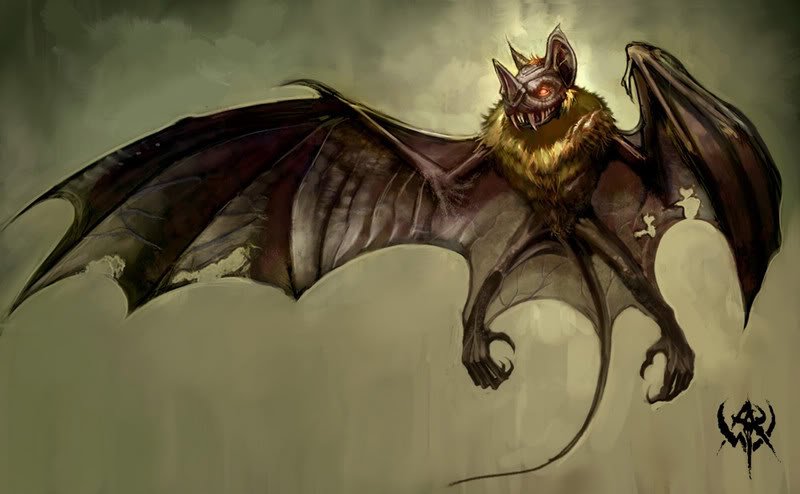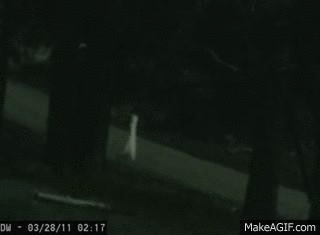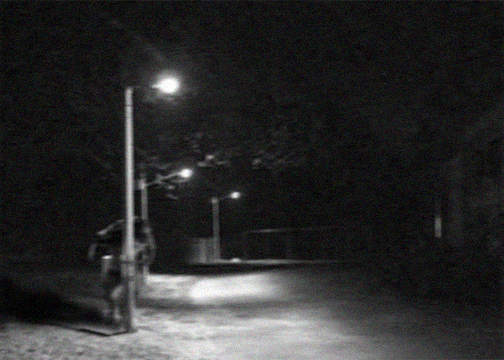Announcements
Welcome to Care of Magical Creatures 601!
I'd like to give you a warm welcome to the Care of Magical Creatures classroom! If you have any questions about the class, please feel free to reach out to Professor Montclam by owl or visit her newly refurbished office!
Note: During the transfer period of professors, you may find some inconsistencies among the lessons. I appreciate your cooperation during this time!
Lesson 2) What is Hidden Comes to Light
Welcome to the second lesson of Year Six! Like previous years, this lesson will be devoted to introducing the year-long project. Up to this point, we have covered notetaking, ecology, and creature law. This year, Professor Cattercorn and I decided that we would look at creatures that have not yet been proven to exist for the year-long project. While Professor Cattercorn will not be present during this lecture, you are always welcome to ask her questions about the year long project. As we all know, there are many creatures that have been discussed throughout the wizarding world that have not been seen by the majority of individuals. Wizards like Xenophilius Lovegood, his daughter Luna Lovegood, and Rolf Scamander have been known supporters of creatures like the Crumple-Horned Snorkack, a creature whose existence has not been proven. Some of you may recall that during one of our Creature Features, we discussed cryptozoology, or the study of animals that do not have enough evidence to prove existence. This year, we'll be diving into the world of magicryptozoology.
What is Magicryptozoology?
Magicryptozoology can be defined as the study of magical creatures that do not have enough evidence to support their existence. Over time, we may come to accept these creatures as real, like with the Gulping Plimpy, but this is not always the case. There are many creatures that have been “seen,” but are not yet accepted as creatures by the Ministry of Magic. Today, I will focus on one creature that went from being considered a magical cryptid to being recognized as a legitimate creature. I will also share legends of several magical cryptids that are a part of the wizarding world. Make sure to listen carefully, as you will have to select one to study for your project.
How Can a Creature Become Recognized?
Though it has rarely been used in recent years, the Ministry of Magic has a rather tedious process for accepting new magical creatures. A minimum of five eye witnesses, who have collectively seen the creature a total of three different times, begins the process. These individuals must then submit an official report to the Department for the Regulation and Control of Magical Creatures for consideration of the new magical creature. After the report has been submitted and processed, the department will conduct a series of interviews with the witnesses, using Veritaserum to confirm the validity of their accounts. Memories may also be taken from these individuals and kept for examination. This is essential because it determines whether or not the Ban of Experimental Breeding was broken. If the witnesses, or some other individual, is found to have illegally bred or developed this creature, it cannot be accepted as a recognized magical creature.
If these interviews are considered factual, a call for additional witnesses will be published. This will allow for other individuals that believe they have had an encounter to come forward and discuss their experience. This is crucial because it allows the Ministry of Magic to determine a relative native area, a generally agreed-upon appearance, and any other important features of the creature that needed to be noted.
After this, the department requests that the original witnesses take Ministry officials to some of the reported locations in an attempt to find specimens. One live and one dead specimen need to be recovered for studying, allowing them to observe characteristics of the creature during its life, to discover any important magical traits the creature may possess, and to identify key information such as reproduction and diet. By having a dead specimen, they can examine the body for different anatomical features and such without hurting the live creature.
Once all of this information has been compiled, a final report is composed. The original witnesses and the Ministry of Magic conduct a meeting, in which they decide who will receive discovery credit, what the creature will be ranked and classified as, and the appropriate description for the text Fantastic Beasts and Where to Find Them and other appropriate academic sources.
This entire progress typically takes a minimum of six months. Should an official report for consideration be rejected, the associated parties will be informed of this decision and why it was made. There is no limit as to how many times a report for consideration may be submitted, but there must be significant changes made to each submission.
From Magical Cryptid to Recognized - The Gulping Plimpies
Legend of the Gulping Plimpy has been around since the early 1900s, with one of the most avid believers being Xenophilius Lovegood in the later half of the 20th century. He often published articles about them in his magazine, The Quibbler, even publishing a recipe for Gulping Plimpy soup. While he never pursued the development of having the creature recognized, his daughter, Luna, and her husband, Rolf, did. Over the course of two years, from 1999-2001, the two spent much of their time searching for the creature. In 2001, they submitted an official report for consideration to the Department for the Regulation and Control of Magical Creatures. They included several locations throughout Europe where they had experiences, names of witnesses in those areas, a general thought of their diet and reproduction, and rough sketches of their appearance in comparison to a regular Plimpy.
After several weeks, they heard back from the Ministry, asking for them to report for interviews within the next two weeks. They were also asked to provide addresses for other witnesses they referenced, so they could be visited if they lived outside of the United Kingdom. All of the interviews were found to be factual and not breaking the Ban on Experimental Breeding.
When a call for other witnesses went out, very few individuals came forward. Xenophilius Lovegood came in for a series of interviews, all of which were found to be factual. The articles he had published in The Quibbler were also discussed, and were found to be written proof of the existence of another species of Plimpy.
After both rounds of interviews were complete, Luna and Rolf took officials from the Department for the Regulation and Control of Magical Creatures to three different locations: a countryside in Spain, Loch Ness in Scotland, and the stream by Luna’s old family home. After several weeks, they were eventually able to find a body of the creature in Scotland and a live specimen in Spain. The department spent almost an entire year studying the live specimen, puzzled by the creature, but also plagued with various other projects that were given a higher level of importance. While at a quick glance it looks like the Plimpy, there are subtle differences between the two. We see significantly larger eyes, as well as visible incisors.
During the final meeting, as it was being discussed who would receive credit for the discovery of the creature, the Ministry announced they wanted to credit both Luna and Rolf. Luna spoke up, asking for her father to also be given credit because he was the individual that first told her of the creature and inspired her to search for it. After some back and forth, it was finally decided credit would go to all three individuals.
Major differences between the two species of Plimplies include the appearance, size of creatures they consume, and where in rivers or streams they reside. Very little difference was noted between the two on reproduction, just a matter of how many days gestation is. It was also noted that the Gulping Plimpy appears to walk or hop along the bottom of an enclosure, whereas Plimpies swim closer to the surface.
Experiencing The Process: the Swooping Evil
There are always creatures that are going through the recognition and acceptance process. One of these creatures is the Swooping Evil. Some of the first sightings of the Swooping Evil date back to the early 1900s. One of the most popular recorded sightings was in 1926, when one escaped from Newt Scamander’s enchanted suitcase in New York. Though Scamander has continued to put forth official reports for consideration, he never had enough eyewitnesses for the report to be considered. This is partly due to memories of the incident being erased, as well as individuals from the MACUSA, or the Magical Congress of the United States of America, not wanting to step forward to aid in the recognition process.
More recently, individuals who have seen the Swooping Evil have come forward, and so Scamander has attempted to have the creature recognized again. The report has been officially considered, and the case is in the interviewing process. If you think you have seen a Swooping Evil, or something you suspect was a Swooping Evil, I recommend sending an owl to the Ministry of Magic to aid in the recognition of the creature.
In the official report, several different aspects of the creature are mentioned. Scamander believes that the venom they secrete can be used to erase bad memories when diluted appropriately. He also mentions that they have spiked wings, aiding in their self protection, and that he has documented cases of them eating human brains. With this in mind, it is likely that if the Swooping Evil is recognized it will have at least an XXXX classification.
Among the released information, it is thought to have fangs of some sort, reptilian features, and to be very vivid in color. I have provided a sketch that was included in the official report below. What do you think of this creature? Notice that it appears to have a significant tail, a wide wingspan, and a very distinct head.

Current Magical Cryptids
Now that we have looked at two magical cryptids that have gone through the process of being recognized, I am going to discuss some creatures that still fall under the classification of magical cryptid. They either have never had an official report be submitted, or it has never been approved. The following five creatures are only a few of the many magical cryptids recognized by magicryptozoologists, but they are great representations from around the world. Notice that many are also seen as cryptids in the Muggle world.
Ahool
The Ahool is a creature that is frequently spotted in the rainforests on the island of Java. It is said to be a giant bat, with a wingspan of twelve feet long. Other accounts claim the creature is a pterosaur, or even a large flying primate. The first accounts of the creature date back to the 1920s, with accounts coming mostly from a Muggle scientist named Dr. Ernst Bartels. The creature does appear to have some form of advanced healing processes and echolocation. Wizards have reported seeing the creature when visiting the island, which has caused it to bridge the gap between Muggle cryptozoology and magicryptozoology.

Crumple-Horned Snorkacks
The Crumple-Horned Snorkack is a creature thought to live in Sweden. Xenophilius and Luna Lovegood are huge supporters for the existence of this creature. Very little is known about these creatures, as even the Lovegoods have not been able to find it on their expeditions. It is thought to have a horn that is easily mistaken as an Erumpent horn. Stories of the creature’s existence have been shared since the 1980s, and are still published today in The Quibbler.

Fresno Nightcrawler
The Fresno Nightcrawler, also commonly referred to as the Fresno Nightwalker, has been seen in California. Native Americans state that the creature has been in the area for a long time. Only two sightings of the creature have recorded evidence, both of which are security video footage. The first tape is from 2007, and the second is from 2011, making it relatively new to the magicryptozoology and Muggle cryptozoology scene. While this is also seen as a Muggle cryptid, it is thought that the creature has some sort of “calming powers,” which would put anyone around them in a peaceful frame of mind. It is believed they are calming because they are solid white, which is commonly associated as the color of peace and tranquility. This has caused many wizards to believe it is a magical creature.

Michigan Dogman
The Michigan Dogman has been seen throughout Michigan since the late 1800s. It is reported to be about seven feet tall, bipedal, and have a human-like torso and dog features on the face, such as a snout, ears, and fur. Various sightings have been reported throughout the years, but all describe sightings such as finding paw prints and hearing howls. Considering the other magical cryptids I have included in this lesson, it has the most sightings by far. It was once written about in Transfiguration Today, trying to prove the creature to be a hoax, but nothing ever came of it.

Mokele-mbembe
The Mokele-mbembe is a creature said to live in the Congo River. It is often called a “living dinosaur” due to its appearance. It is often compared to the Apatosaurus, a long-necked dinosaur from the Late Jurassic Period. The first of these sightings, that are recorded, date back to the early 1900s. Many have gone in search of the creature, but no one has been able to capture the creature. It has sparked interest in the Muggle and wizarding world alike due to its potential ability to become invisible. Footprints have been found and various photographs have been taken, but any time a video is attempted, the creature mysteriously vanishes!
The Year Long Project
After learning about just a few of the magical cryptids we recognize, you will begin the process of developing an official report for consideration to send to the Department for the Regulation and Control of Magical Creatures. By the end of the project, you will have selected one of the creatures I discussed above and write a full length report on why you believe it should be recognized as a magical creature. You will be able to submit your report to the Department for the Regulation and Control of Magical Creatures, just like you could submit your law proposal. Throughout this year, you will be developing an argument for why one of the creatures above should be accepted as a magical creature by the department. Should you want to cover a different creature, you must owl Professor Anne or Cattercorn to discuss it, but do keep in mind that exceptions will rarely be made.
I certainly think that has been enough for today. I am so sorry if this feels like a lot of information to take in at once. It is a great deal of information, but it is important to wrap your head around the idea that there are creatures we have yet to recognize even in the wizarding world. It is a beautiful thought, really; that nature will always be creating new creatures. As for your assignment today, you will begin to develop your official report. This will take time, so make sure to save each part of the project as you will be needing it again. With that, I wish you all luck, and hope you have a wonderful week!
All pictures are found using the Google Images search engine, and belong to their owners.
We will be building off of your prior knowledge of these creatures from popular culture, and helping you understand why they are seen in both worlds. Some of these creatures are considered cryptids or mythological in the Muggle world, whereas others have Muggle counterparts.
- COMC-OWL
Enroll


